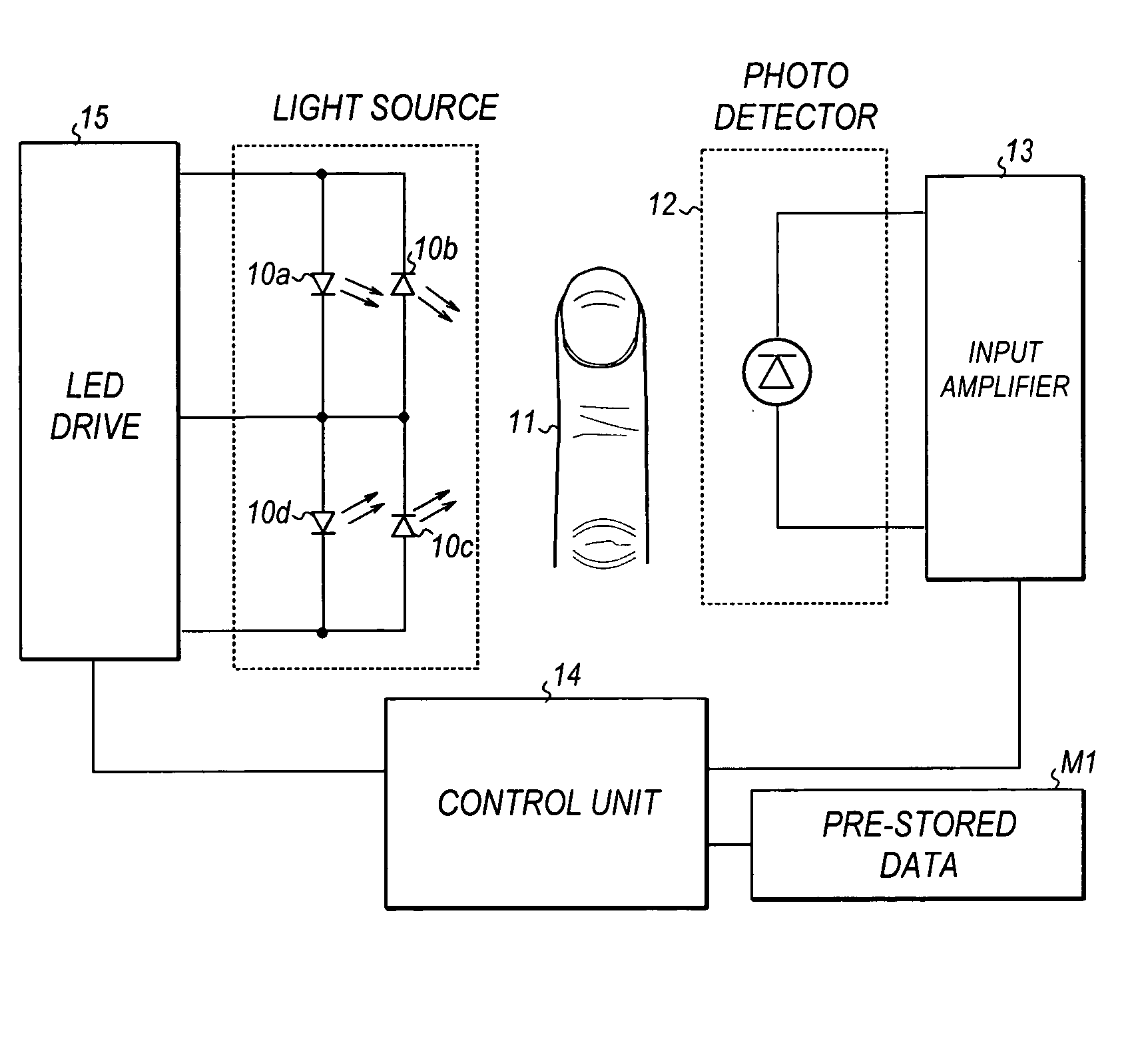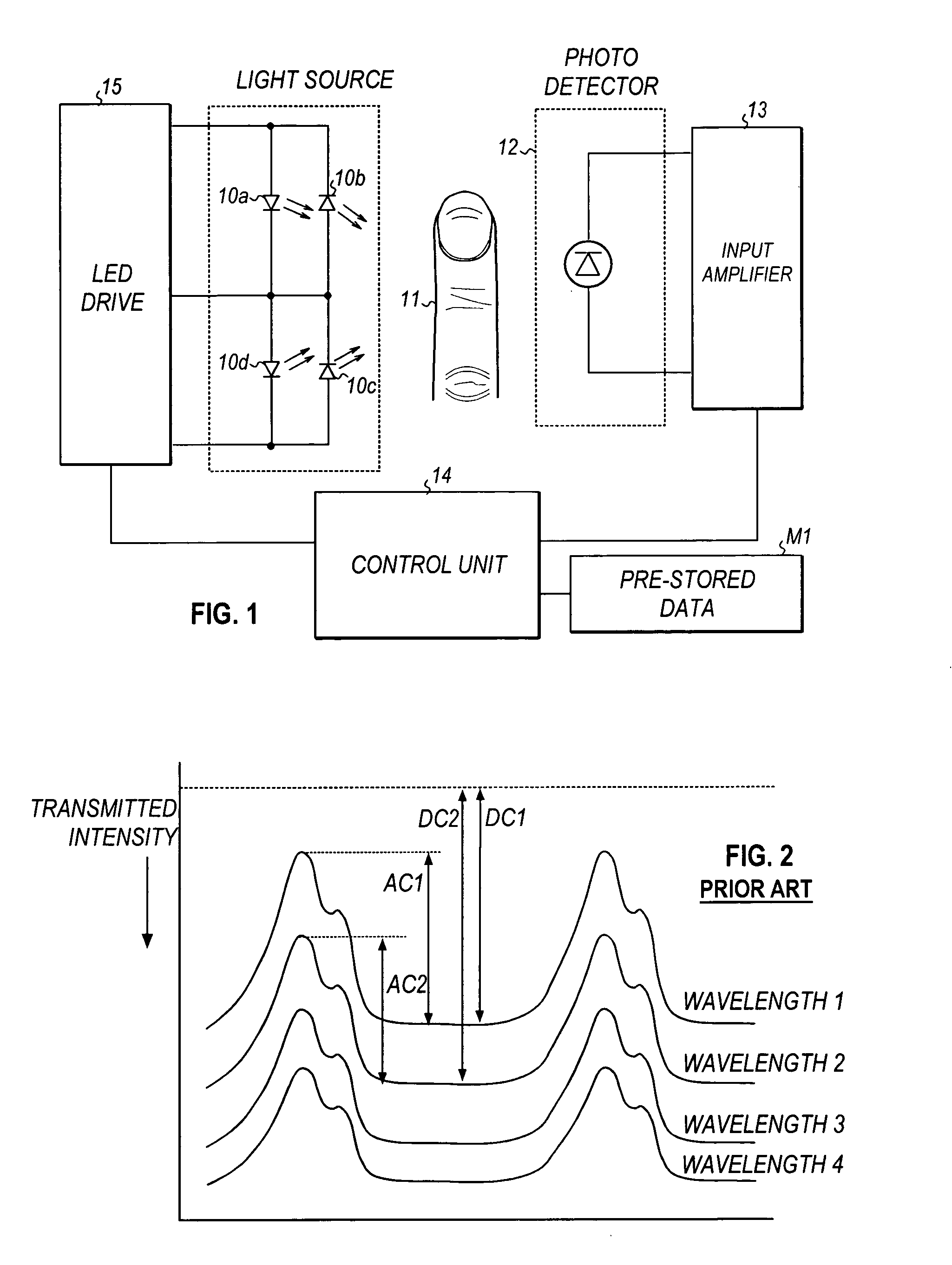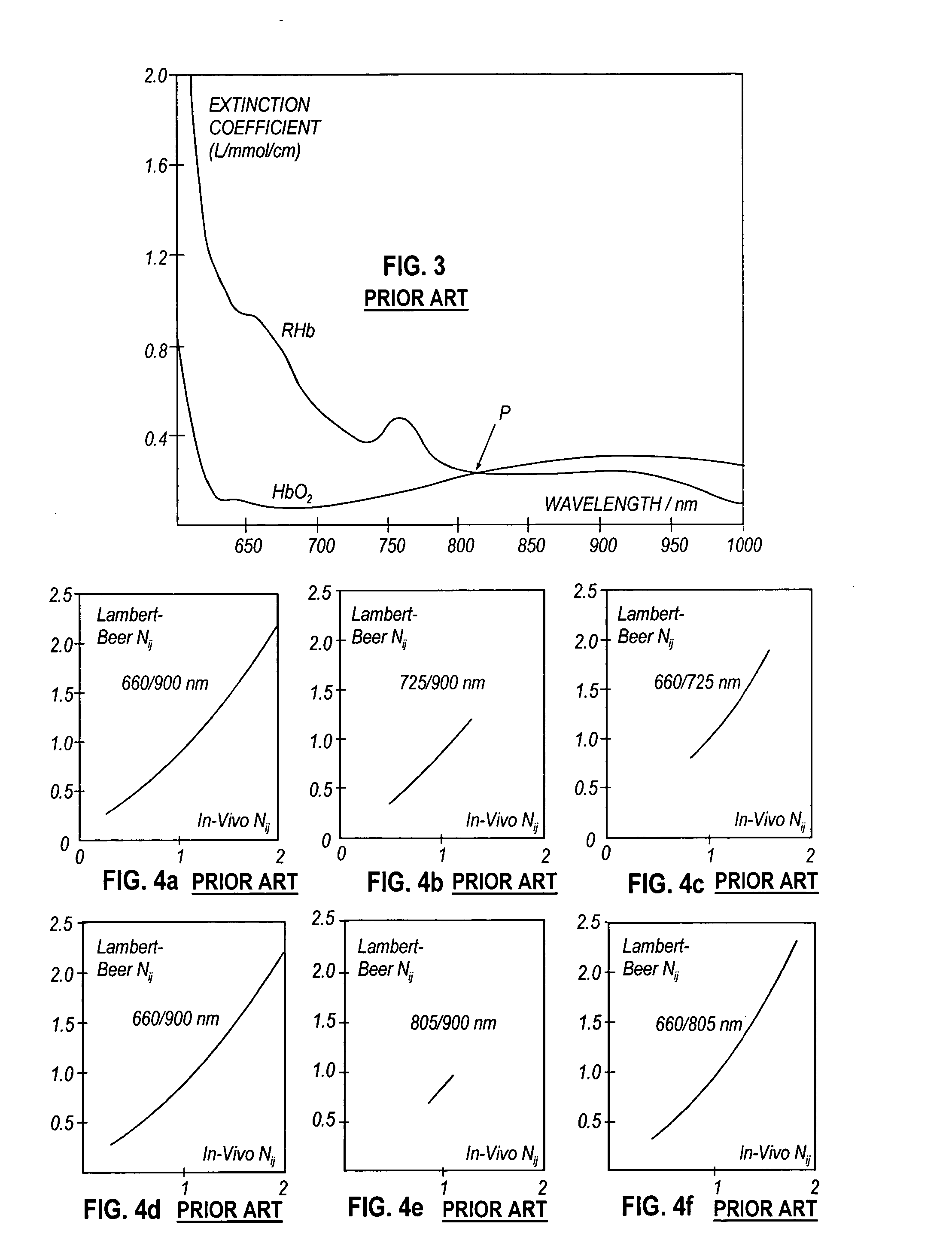Compensation of human variability in pulse oximetry
a pulse oximeter and human variability technology, applied in the field of pulse oximeters, can solve the problems of short-lived effect of dyes, large deviation in pulse oximeter readings, and inability to accurately measure the accuracy of pulse oximeters
- Summary
- Abstract
- Description
- Claims
- Application Information
AI Technical Summary
Benefits of technology
Problems solved by technology
Method used
Image
Examples
Embodiment Construction
Guidelines for Implementing the Invention
[0087] The method of the present invention is implemented in the control unit of the pulse oximeter on the basis of the four modulation signals described above, i.e. the novelty of the system resides within the control unit itself. However, to be able to perform the self-calibration in conjunction with each patient, the control unit requires some pre-calculated data, which is stored in the memory of the pulse oximeter. Instead of being stored in conjunction with the control unit, this data, or at least part of it, can also be stored in the sensor part of the pulse oximeter. The sensor part, including at least the LEDs and the photo detector, is connected to the signal processing part, which includes the control unit. Consequently, depending on the overall configuration, the novelty can also reside partly in the sensor.
[0088] Human tissue can influence the accuracy of a pulse oximeter by two different mechanisms. First a direct wavelength s...
PUM
 Login to View More
Login to View More Abstract
Description
Claims
Application Information
 Login to View More
Login to View More - R&D
- Intellectual Property
- Life Sciences
- Materials
- Tech Scout
- Unparalleled Data Quality
- Higher Quality Content
- 60% Fewer Hallucinations
Browse by: Latest US Patents, China's latest patents, Technical Efficacy Thesaurus, Application Domain, Technology Topic, Popular Technical Reports.
© 2025 PatSnap. All rights reserved.Legal|Privacy policy|Modern Slavery Act Transparency Statement|Sitemap|About US| Contact US: help@patsnap.com



